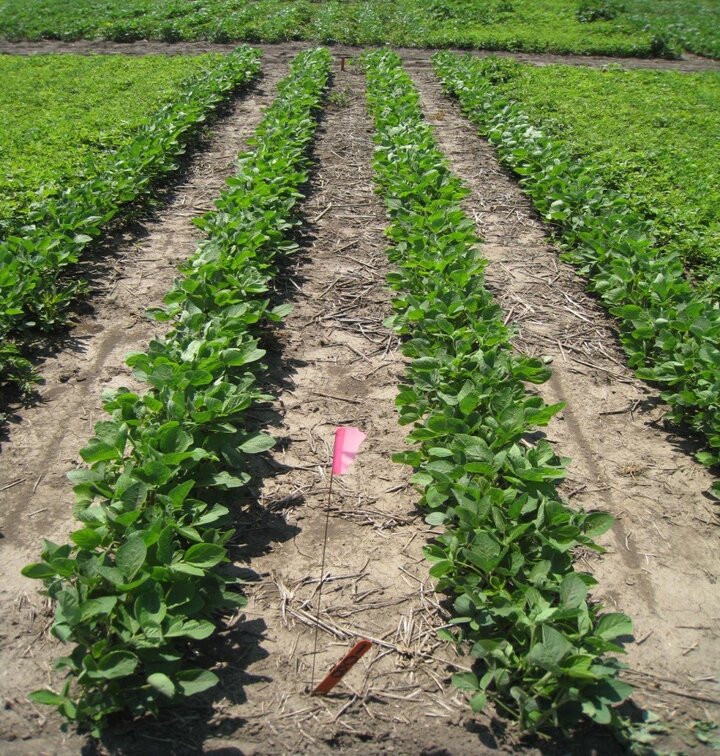Please see 2019 update on this topic for the latest recommendations as well as 2019 podcast for more on using burndown herbicides.
This week I received phone calls from several growers asking about the planting intervals for corn and soybean following 2,4-D/dicamba applications in a burndown program. With cold, wet conditions in March, many producers may be facing a smaller than expected window for making their herbicide burndown applications in April. This makes timely applications now even more important to provide for a proper interval before planting this year.
Dicamba and 2,4-D are commonly used burndown herbicides for control of winter annual broadleaf weeds such as dandelion, field pennycress, henbit, tansy mustard, etc.
Additionally, several summer annual weed species in Nebraska emerge early in the season, prior to planting corn and soybean, and need to be controlled before they grow too large to be effectively controlled.
Of particular concern are giant ragweed, kochia, and marestail; we believe there are numerous populations of these species in Nebraska that cannot be controlled by glyphosate because they have evolved resistance to glyphosate. Therefore, use of 2,4-D/dicamba has increased in recent years, particularly for control of glyphosate-resistant marestail and giant ragweed. Based on observations in our giant ragweed research studies, we have had success controlling glyphosate-resistant giant ragweed with any herbicide program containing 2,4-D as a component of a burndown program.
If you apply 2,4-D prior to planting, be sure to adhere to the planting interval specified on the label. Several 2,4-D products have different planting intervals for soybean, somewhere in the range of 7 to 30 days depending on application rate.
As a general guideline, the following planting intervals should be maintained for corn and soybean after applying 2,4-D/dicamba
- If soybean is to be planted this year, do NOT apply dicamba. XtendiMax, a new dicamba product with VaporGrip Technology, can be applied in burndown application, but only if planting Roundup Ready 2 Xtend Soybean this season.
- If 2,4-D (4 lb/gal formulation) is applied at 16 fl oz/acre in a burndown program, the planting interval should be seven days for corn and soybean
- If 2,4-D (4 lb/gal) is applied at a rate above 16 fl oz/acre in a burndown program, the planting interval should be 14 days for corn and 30 days for soybean
- If dicamba is applied at 4 oz/acre in a burndown program, the planting interval for corn should be five days. If dicamba is applied at 8 oz/acre, the planting interval for corn should be seven days. DiFlexx and DiFlexx DUO are dicamba products with CSI safener; therefore, corn can be planted any time after application of these products, which may be particularly helpful in a replant situation. Care should be taken, however, so that corn seed does not contact the herbicide.



